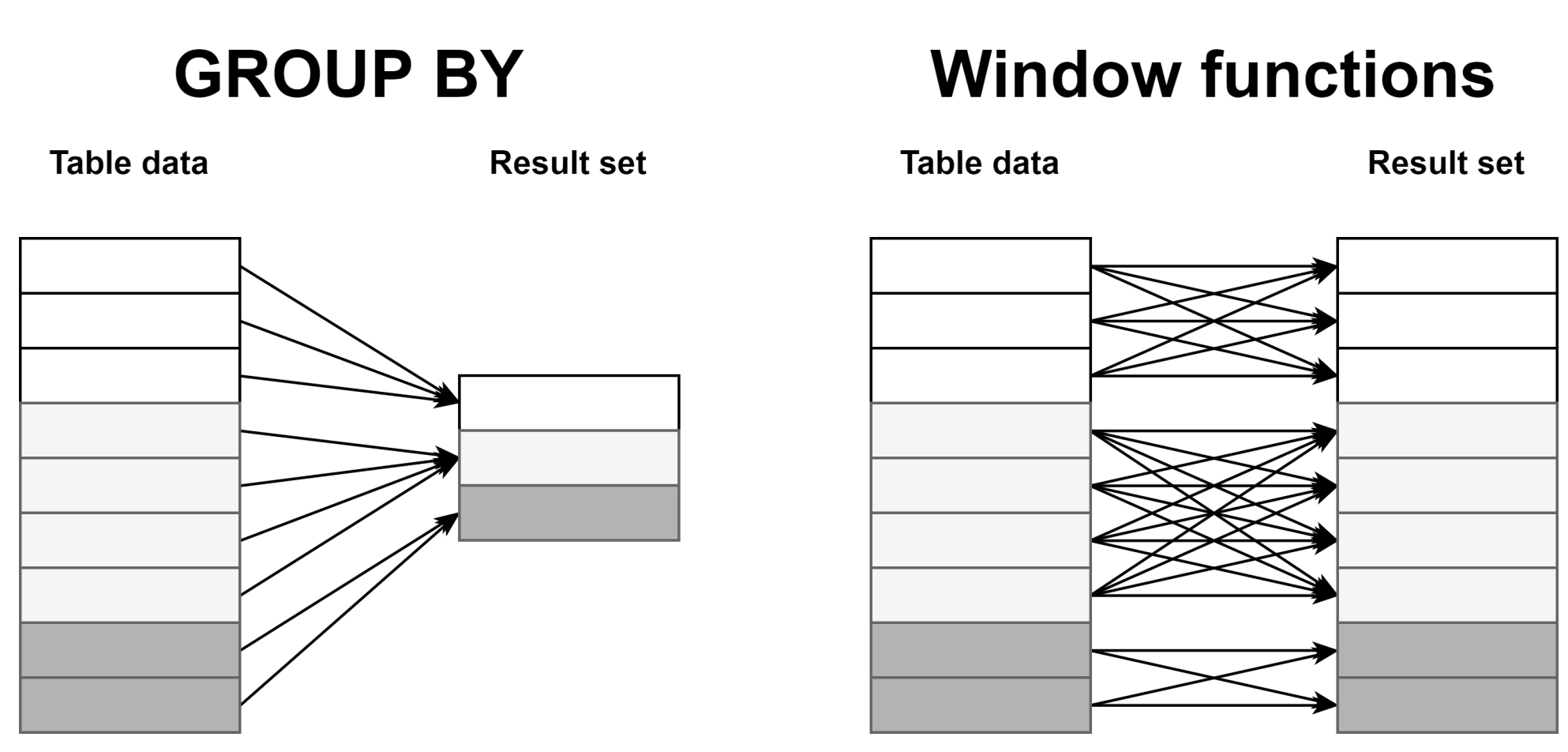Apart from grouping and aggregation, PostgreSQL provides another way to perform computations based on the values of several records. It can be done using window functions. Grouping and aggregation mean one single output record for every group of several input records. Window functions can do similar things, but they are executed for every record, and the number of records in the output and the input is the same:

In the preceding diagram, the rectangles represent the records of a table. Let's assume that the color of the rectangles indicates the value of a field used to group the records. When the GROUP BY operation is used in a query, each distinct value of that field will create a group and each group will become a single record in the results of the query. This was explained in Chapter 5, SQL Language. Window functions provide...












































































